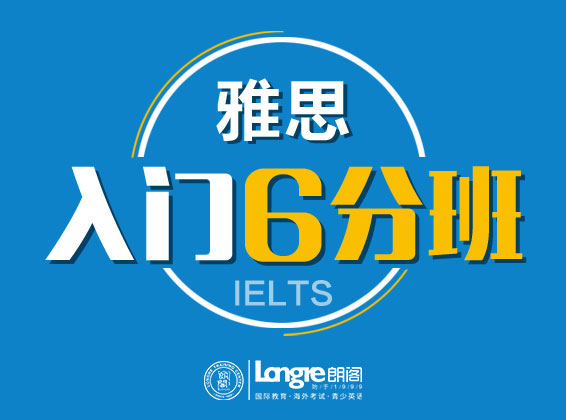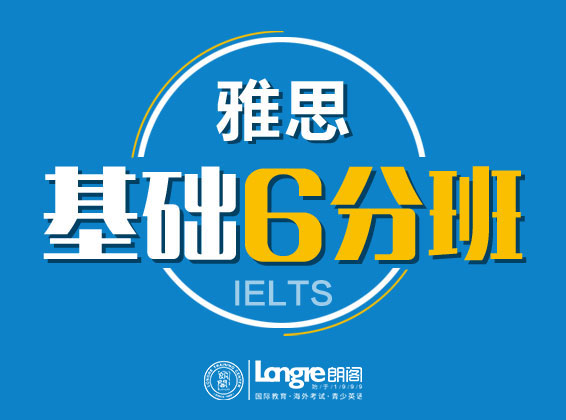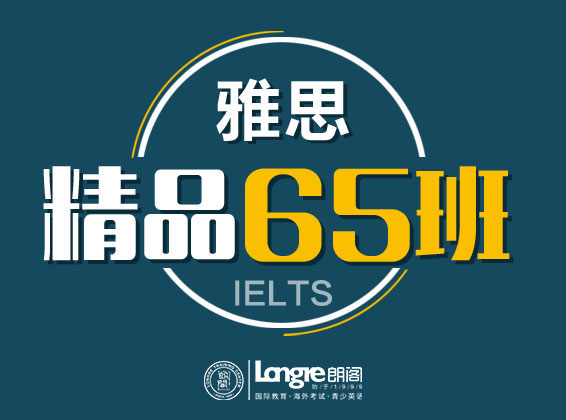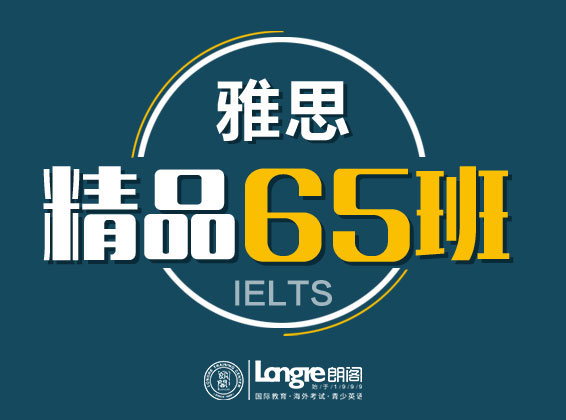|
已经9月了,大家的雅思都考完了吗,正在备考的同学准备的怎么样了呢,考试的真题还是有必要看一下的哦,下面跟着南京朗阁小编一起回顾一下2020年9月12日雅思阅读考题吧。 P1 无所不知的托马斯杨Thomas Young The Last True Know-It-All P2 英国羊毛 P3 Psychology of New Product Adoption(新产品接受研究) 朗阁名师徐航点评 1. 本次考试的难度总体中上等,连续两场的考到单选、多选和句子完成配对。如上场考试预测,再次出现固定题型搭配的出法。第一篇出现了简答。文章的话题和题型搭配也是在剑桥真题中都有迹可循,所以真题吃透非常必要。 2. 整体分析:涉及人物传记类(P1)、国家地理人文类(P2)、商业营销类(P3)。 本次考试的第一篇文章重复2019年10月10日雅思考试的原篇,第三篇是重复2013年6月8日雅思考试原篇。P1是常规的填空+简答篇章,两种顺序题型搭配出现,加上话题难度和题目难度不大,应该是容易得分的篇章。备考的同学可以在剑桥找到简答题,尤其是剑桥9之前的简答出的更多。P2是国家地理人文类的话题,介绍英国的羊毛。类似上9月5日雅思第一篇介绍澳洲金矿,考生注意平时国家地理人文的文章积累。难度中上。题型上也延续19年的出题特点,出现配对题,考察定位速度和准确度。主要题型搭配是段落配对+多选+句子填空。P3也是有序题型的搭配,主要是单选+句子匹配+判断。单选易丢分,文章理解难度不大。 3. 部分答案及参考文章: Passage 1:无所不知的托马斯杨 题型:判断+简答 技巧分析: 判断出现在第一篇是最近考试常态,本次搭配的不是填空而是简答。简答题在剑桥中较少出现,考试中出现频率不高,但需要练习过才能在考试中正常发挥。首先,关注字数限制和原文原词两个要求。其次,关注每个问题的疑问词对答案的提示,例如what year提示找年份,who提示找人等。同时注意,判断+简答和判断+填空类似,题型内部都有顺序性,两个题型之间可能按顺序出题或者穿插出题。 参考答案: 1.1-5:TRUE、 FALSE、 FALSE、 NOT GIVEN、 TRUE 6-10:TRUE、 NOT GIVEN、 46、human eye、 Indo-European 11-13:Richard、Royal Institution、 gas lighting Thomas Young The Last True Know-It-All A Thomas Young (1773-1829) contributed 63 articles to the Encyclopedia Britannica, including 46 biographical entries (mostly on scientists and classicists) and substantial essays on "Bridge,” "Chromatics," "Egypt," "Languages" and "Tides". Was someone who could write authoritatively about so many subjects a polymath, a genius or a dilettante? In an ambitious new biography, Andrew Robinson argues that Young is a good contender for the epitaph "the last man who knew everything." Young has competition, however: The phrase, which Robinson takes for his title, also serves as the subtitle of two other recent biographies: Leonard Warren's 1998 life of paleontologist Joseph Leidy (1823-1891) and Paula Findlen's 2004 book on Athanasius Kircher (1602-1680), another polymath. B Young, of course, did more than write encyclopedia entries. He presented his first paper to the Royal Society of London at the age of 20 and was elected a Fellow a week after his 21st birthday. In the paper, Young explained the process of accommodation in the human eye on how the eye focuses properly on objects at varying distances. Young hypothesized that this was achieved by changes in the shape of the lens. Young also theorized that light traveled in waves and he believed that, to account for the ability to see in color, there must be three receptors in the eye corresponding to the three "principal colors" to which the retina could respond: red, green, violet. All these hypothesis were subsequently proved to be correct. C Later in his life, when he was in his forties, Young was instrumental in cracking the code that unlocked the unknown on the Rosetta Stone, a tablet that was "found" in Egypt by the Napoleonic army in 1799. The stone contains text in three alphabets: Greek, something unrecognizable and Egyptian hieroglyphs. The unrecognizable is now known as demotic and, as Young deduced, is related directly to hieroglyphic. His initial work on this appeared in his Britannica entry on Egypt. In another entry, he coined the term Indo-European to describe the family of languages spoken throughout most of Europe and northern India. These are the landmark achievements of a man who was a child prodigy and who, unlike many remarkable children, did not disappear into oblivion as an adult. D Born in 1773 in Somerset in England, Young lived from an early age with his maternal grandfather, eventually leaving to attend boarding school. He had devoured books from the age of two, and through his own initiative he excelled at Latin, Greek, mathematics and natural philosophy. After leaving school, he was greatly encouraged by his mother's uncle, Richard Brocklesby, a physician and Fellow of the Royal Society. Following Brocklesby's lead, Young decided to pursue a career in medicine. He studied in London, following the medical circuit, and then moved on to more formal education in Edinburgh, Gottingen and Cambridge. After completing his medical training at the University of Cambridge in 1808, Young set up practice as a physician in London. He soon became a Fellow of the Royal College of Physicians and a few years later was appointed physician at St. George's Hospital. E Young's skill as a physician, however, did not equal his skill as a scholar of natural philosophy or linguistics. Earlier, in 1801, he had been appointed to a professorship of natural philosophy at the Royal Institution, where he delivered as many as 60 lectures in a year. These were published in two volumes in 1807. In 1804 Young had become secretary to the Royal Society, a post he would hold until his death. His opinions were sought on civic and national matters, such as the introduction of gas lighting to London and methods of ship construction. From 1819 he was superintendent of the Nautical Almanac and secretary to the Board of Longitude. From 1824 to 1829 he was physician to and inspector of calculations for the Palladian Insurance Company. Between 1816 and 1825 he contributed his many and various entries to the Encyclopedia Britannica, and throughout his career he authored numerous books, essays and papers. F Young is a perfect subject for a biography - perfect, but daunting. Few men contributed so much to so many technical fields. Robinson's aim is to introduce non-scientists to Young's work and life. He succeeds, providing clear expositions of the technical material (especially that on optics and Egyptian hieroglyphs). Some readers of this book will, like Robinson, find Young's accomplishments impressive; others will see him as some historians have - as a dilettante. Yet despite the rich material presented in this book, readers will not end up knowing Young personally. We catch glimpses of a playful Young, doodling Greek and Latin phrases in his notes on medical lectures and translating the verses that a young lady had written on the walls of a summerhouse into Greek elegiacs. Young was introduced into elite society, attended the theatre and learned to dance and play the flute. In addition, he was an accomplished horseman. However, his personal life looks pale next to his vibrant career and studies. G Young married Eliza Maxwell in 1804, and according to Robinson, "their marriage was a happy one and she appreciated his work." Almost all we know about her is that she sustained her husband through some rancorous disputes about optics and that she worried about money when his medical career was slow to take off. Very little evidence survives about the complexities of Young's relationships with his mother and father. Robinson does not credit them, or anyone else, with shaping Young's extraordinary mind. Despite the lack of details concerning Young's relationships, however, anyone interested in what it means to be a genius should read this book. Questions 1-7 Do the following statements agree with the information given in Reading Passage 1? In boxes 1-6 on your answer sheet, write TRUE if the statement is true FALSE if the statement is false NOT GIVEN if the information is not given in the passage 1 “The last man who knew everything” has also been claimed to other people. 2 All Young’s articles were published in Encyclopedia Britannica. 3 Like others, Young wasn't so brilliant when grew up. 4 Young's talents as a doctor are surpassing his other skills. 5 Young's advice was sought by people responsible for local and national issues. 6 Young was interested in various social pastimes. 7 Young suffered from a disease in his later years. Questions 8-13 Answer the questions below. Choose NO MORE THAN THREE WORDS AND/OR A NUMBER from the passage for each answer. 8 How many life stories did Young write for Encyclopedia Britannica? 9 What aspect of scientific research did Young do in his first academic paper? 10 What name did Young introduce to refer to a group of languages? 11 Who inspired Young to start the medical studies? 12 Where did Young get a teaching position? 13 What contribution did Young make to London? Passage 2:英国羊毛 题型:段落细节配对+多选+句子填空 技巧分析:段落细节配对与多选的组合在最新的剑桥13-15很常见(例如剑桥14T4P2 Why Zoos Are Good),都属于细节类题型,有一定难度。特别需要注意多选题的范围,如果是局部段落定位,可以独立完成。如果是全篇定位,需要带入其他题型共同解题。 参考答案:待补充 Passage 3:Psychology of New Product Adoption(新产品接受研究) 题型:单选+句子完成配对+判断 技巧分析:单选+句子完成配对这组搭档再次出现,考生可以在剑桥中加强练习。整体来看没有乱序题,整篇按顺序做即可。一般两种情况:题型内部按顺序解题,题型之间也是按顺序出现;题型内部按顺序出题,但题型之间是穿插出题(例如剑桥10T4P3 When evolution runs backwards)。单选题是丢分重灾区,注意正确的选项检查方法。单选题在P3出现的可能性最大,耗时,会影响其他题型拿分。最后的判断题并不难,注意留足时间。 参考答案:待补充 文章内容: 关于经济学相对优势的问题。内容有讲到企业与创新,并分析了一些消费者心理,同有各路专家出来给出解释。印象比较深刻的观点是说消费者会拿商品和自己已有的物品比较进行主观判断,而且总体上购买欲是比较消极的。有俩实验: 一个是让两组人分别扮演买者和卖者,对一批咖啡杯进行估价,卖者永远比买者估价高出一倍左右。 另一个是三组小朋友,一组可以任意选择被告知价格差不多的咖啡杯和瑞士巧克力,第二组有咖啡杯但他们可以选择用自己的咖啡杯去换巧克力,第三组有巧克力但可以选择用自己的巧克力换咖啡杯。结果已经有咖啡杯或巧克力的人,只有10%左右愿意拿手头的东西换新的。于是各路专家继续解释。 原文拓展阅读:Understanding the Psychology of New-ProductAdoption More than a century ago, Ralph Waldo Emerson is reported to have said, “If a man can write a better book, preach a better sermon, or make a better mousetrap than his neighbor, though he build his house in the woods, the world will make a beaten path to his door.” If only marketing innovations were that simple. In today’s hypercompetitive marketplace, companies that successfully introduce new products are more likely to flourish than those that don’t. Businesses spend billions of dollars making better “mousetraps” only to find consumers roundly rejecting them. Studies show that new products fail at the stunning rate of between 40% and 90%, depending on the category, and the odds haven’t changed much in the past 25 years. In the U.S. packaged goods industry, for instance, companies introduce 30,000 products every year, but 70% to 90% of them don’t stay on store shelves for more than 12 months. Most innovative products—those that create new product categories or revolutionize old ones—are also unsuccessful. According to one study, 47% of first movers have failed, meaning that approximately half the companies that pioneered new product categories later pulled out of those businesses. Consider three high-profile innovations whose performances have fallen far short of expectations: Webvan spent more than $1 billion to create an online grocery business, only to declare bankruptcy in July 2001 after failing to attract as many customers as it thought it would. In spite of gaining the support of Apple’s Steve Jobs, Amazon’s Jeff Bezos, and many high-profile investors, Segway sold a mere 6,000 scooters in the 18 months after its launch—a far cry from the 50,000 to 100,000 units projected. Although TiVo’s digital video recorder (DVR) has garnered rave reviews since the late 1990s from both industry experts and product adopters, the company had amassed $600 million in operating losses by 2005 because demand trailed expectations. After the fact, experts and novices alike tend to dismiss unsuccessful innovations as bad ideas that were destined to fail. But surely that’s too simple an explanation. If these innovations are so misguided, why isn’t it obvious before the fact? Webvan was backed by seasoned retailers, executives, and investment bankers, but it was nonetheless a spectacular failure. While the Segway and TiVo stories have yet to play out fully, both company executives and industry analysts were far more optimistic about those innovations than they should have been. Why do consumers fail to buy innovative products even when they offer distinct improvements over existing ones? Why do companies invariably have more faith in new products than is warranted? Few would question the objective advantages of many innovations over existing alternatives, but that’s often not enough for them to succeed. To understand why new products fail to live up to companies’ expectations, we must delve into the psychology of behavior change. This article presents a behavioral framework that explains why so many products fail and outlines some actions that companies can take to improve their chances of success. New products often require consumers to change their behavior. As companies know,those behavior changes entail costs. Consumers incur transaction costs, such as the activation fees they have to pay when they switch from one cellular service provider to another.They also bear learning costs, such as when they shift from manual to automatic automo-bile transmissions. People sustain obsolescence costs, too. For example, when they switch from VCRs to DVD players, their video-tape collections become useless. All of these are economic switching costs that most companies routinely anticipate. What businesses don’t take into account,however, are the psychological costs associated with behavior change. Many products fail be-cause of a universal, but largely ignored, psychological bias: People irrationally over value benefits they currently possess relative to those they don’t. The bias leads consumers to value the advantages of products they own more than the benefits of new ones. It also leads executives to value the benefits of innovations they’ve developed over the advantages of in-cumbent products. That leads to a clash in perspectives: Executives, who irrationally overvalue their innovations, must predict the buying behavior of consumers, who irrationally overvalue existing alternatives. The results are often disastrous:Consumers reject new products that would make them better off, while executives are at a loss to anticipate failure. This double-edged bias is the curse of innovation. 考试预测 1. 本场考试整体难度中上,题型不难,话题整体不难看懂,第二篇比第三篇更难一些。简答题的出现提醒考生重视练习以备考试之需。本场考试配对题不多,类型上也只出现了段落细节配对,下场考试除了常规的填空,判断,选择题之外,要重点预警人名观点配对和heading题,注意人名观点配对人名的迅速定位和替换,保证得分,同时注意heading题文章段落主旨句的提取和略读技巧,学会在heading解题中覆盖其他题型提高效率。20年考试突出表现2-3种题型固定搭配出现的模式,考生要注意段落细节配对+人名观点配对,段落细节配对+多选,单选+句子完成配对,heading+判断+填空这四种题型演练。2. 下场考试的话题可能有关历史类,人文类和自然科学类。 3. 重点浏览2013和2019年机经。 已经9月了,大家的雅思都考完了吗,正在备考的同学准备的怎么样了呢,考试的真题还是有必要看一下的哦,下面跟着南京朗阁小编一起回顾一下2020年9月12日雅思阅读考题吧。 P1 无所不知的托马斯杨Thomas Young The Last True Know-It-All P2 英国羊毛 P3 Psychology of New Product Adoption(新产品接受研究) 朗阁名师徐航点评 1. 本次考试的难度总体中上等,连续两场的考到单选、多选和句子完成配对。如上场考试预测,再次出现固定题型搭配的出法。第一篇出现了简答。文章的话题和题型搭配也是在剑桥真题中都有迹可循,所以真题吃透非常必要。 2. 整体分析:涉及人物传记类(P1)、国家地理人文类(P2)、商业营销类(P3)。 本次考试的第一篇文章重复2019年10月10日雅思考试的原篇,第三篇是重复2013年6月8日雅思考试原篇。P1是常规的填空+简答篇章,两种顺序题型搭配出现,加上话题难度和题目难度不大,应该是容易得分的篇章。备考的同学可以在剑桥找到简答题,尤其是剑桥9之前的简答出的更多。P2是国家地理人文类的话题,介绍英国的羊毛。类似上9月5日雅思第一篇介绍澳洲金矿,考生注意平时国家地理人文的文章积累。难度中上。题型上也延续19年的出题特点,出现配对题,考察定位速度和准确度。主要题型搭配是段落配对+多选+句子填空。P3也是有序题型的搭配,主要是单选+句子匹配+判断。单选易丢分,文章理解难度不大。 3. 部分答案及参考文章: Passage 1:无所不知的托马斯杨 题型:判断+简答 技巧分析: 判断出现在第一篇是最近考试常态,本次搭配的不是填空而是简答。简答题在剑桥中较少出现,考试中出现频率不高,但需要练习过才能在考试中正常发挥。首先,关注字数限制和原文原词两个要求。其次,关注每个问题的疑问词对答案的提示,例如what year提示找年份,who提示找人等。同时注意,判断+简答和判断+填空类似,题型内部都有顺序性,两个题型之间可能按顺序出题或者穿插出题。 参考答案: 1.1-5:TRUE、 FALSE、 FALSE、 NOT GIVEN、 TRUE 6-10:TRUE、 NOT GIVEN、 46、human eye、 Indo-European 11-13:Richard、Royal Institution、 gas lighting Thomas Young The Last True Know-It-All A Thomas Young (1773-1829) contributed 63 articles to the Encyclopedia Britannica, including 46 biographical entries (mostly on scientists and classicists) and substantial essays on "Bridge,” "Chromatics," "Egypt," "Languages" and "Tides". Was someone who could write authoritatively about so many subjects a polymath, a genius or a dilettante? In an ambitious new biography, Andrew Robinson argues that Young is a good contender for the epitaph "the last man who knew everything." Young has competition, however: The phrase, which Robinson takes for his title, also serves as the subtitle of two other recent biographies: Leonard Warren's 1998 life of paleontologist Joseph Leidy (1823-1891) and Paula Findlen's 2004 book on Athanasius Kircher (1602-1680), another polymath. B Young, of course, did more than write encyclopedia entries. He presented his first paper to the Royal Society of London at the age of 20 and was elected a Fellow a week after his 21st birthday. In the paper, Young explained the process of accommodation in the human eye on how the eye focuses properly on objects at varying distances. Young hypothesized that this was achieved by changes in the shape of the lens. Young also theorized that light traveled in waves and he believed that, to account for the ability to see in color, there must be three receptors in the eye corresponding to the three "principal colors" to which the retina could respond: red, green, violet. All these hypothesis were subsequently proved to be correct. C Later in his life, when he was in his forties, Young was instrumental in cracking the code that unlocked the unknown on the Rosetta Stone, a tablet that was "found" in Egypt by the Napoleonic army in 1799. The stone contains text in three alphabets: Greek, something unrecognizable and Egyptian hieroglyphs. The unrecognizable is now known as demotic and, as Young deduced, is related directly to hieroglyphic. His initial work on this appeared in his Britannica entry on Egypt. In another entry, he coined the term Indo-European to describe the family of languages spoken throughout most of Europe and northern India. These are the landmark achievements of a man who was a child prodigy and who, unlike many remarkable children, did not disappear into oblivion as an adult. D Born in 1773 in Somerset in England, Young lived from an early age with his maternal grandfather, eventually leaving to attend boarding school. He had devoured books from the age of two, and through his own initiative he excelled at Latin, Greek, mathematics and natural philosophy. After leaving school, he was greatly encouraged by his mother's uncle, Richard Brocklesby, a physician and Fellow of the Royal Society. Following Brocklesby's lead, Young decided to pursue a career in medicine. He studied in London, following the medical circuit, and then moved on to more formal education in Edinburgh, Gottingen and Cambridge. After completing his medical training at the University of Cambridge in 1808, Young set up practice as a physician in London. He soon became a Fellow of the Royal College of Physicians and a few years later was appointed physician at St. George's Hospital. E Young's skill as a physician, however, did not equal his skill as a scholar of natural philosophy or linguistics. Earlier, in 1801, he had been appointed to a professorship of natural philosophy at the Royal Institution, where he delivered as many as 60 lectures in a year. These were published in two volumes in 1807. In 1804 Young had become secretary to the Royal Society, a post he would hold until his death. His opinions were sought on civic and national matters, such as the introduction of gas lighting to London and methods of ship construction. From 1819 he was superintendent of the Nautical Almanac and secretary to the Board of Longitude. From 1824 to 1829 he was physician to and inspector of calculations for the Palladian Insurance Company. Between 1816 and 1825 he contributed his many and various entries to the Encyclopedia Britannica, and throughout his career he authored numerous books, essays and papers. F Young is a perfect subject for a biography - perfect, but daunting. Few men contributed so much to so many technical fields. Robinson's aim is to introduce non-scientists to Young's work and life. He succeeds, providing clear expositions of the technical material (especially that on optics and Egyptian hieroglyphs). Some readers of this book will, like Robinson, find Young's accomplishments impressive; others will see him as some historians have - as a dilettante. Yet despite the rich material presented in this book, readers will not end up knowing Young personally. We catch glimpses of a playful Young, doodling Greek and Latin phrases in his notes on medical lectures and translating the verses that a young lady had written on the walls of a summerhouse into Greek elegiacs. Young was introduced into elite society, attended the theatre and learned to dance and play the flute. In addition, he was an accomplished horseman. However, his personal life looks pale next to his vibrant career and studies. G Young married Eliza Maxwell in 1804, and according to Robinson, "their marriage was a happy one and she appreciated his work." Almost all we know about her is that she sustained her husband through some rancorous disputes about optics and that she worried about money when his medical career was slow to take off. Very little evidence survives about the complexities of Young's relationships with his mother and father. Robinson does not credit them, or anyone else, with shaping Young's extraordinary mind. Despite the lack of details concerning Young's relationships, however, anyone interested in what it means to be a genius should read this book. Questions 1-7 Do the following statements agree with the information given in Reading Passage 1? In boxes 1-6 on your answer sheet, write TRUE if the statement is true FALSE if the statement is false NOT GIVEN if the information is not given in the passage 1 “The last man who knew everything” has also been claimed to other people. 2 All Young’s articles were published in Encyclopedia Britannica. 3 Like others, Young wasn't so brilliant when grew up. 4 Young's talents as a doctor are surpassing his other skills. 5 Young's advice was sought by people responsible for local and national issues. 6 Young was interested in various social pastimes. 7 Young suffered from a disease in his later years. Questions 8-13 Answer the questions below. Choose NO MORE THAN THREE WORDS AND/OR A NUMBER from the passage for each answer. 8 How many life stories did Young write for Encyclopedia Britannica? 9 What aspect of scientific research did Young do in his first academic paper? 10 What name did Young introduce to refer to a group of languages? 11 Who inspired Young to start the medical studies? 12 Where did Young get a teaching position? 13 What contribution did Young make to London? Passage 2:英国羊毛 题型:段落细节配对+多选+句子填空 技巧分析:段落细节配对与多选的组合在最新的剑桥13-15很常见(例如剑桥14T4P2 Why Zoos Are Good),都属于细节类题型,有一定难度。特别需要注意多选题的范围,如果是局部段落定位,可以独立完成。如果是全篇定位,需要带入其他题型共同解题。 参考答案:待补充 Passage 3:Psychology of New Product Adoption(新产品接受研究) 题型:单选+句子完成配对+判断 技巧分析:单选+句子完成配对这组搭档再次出现,考生可以在剑桥中加强练习。整体来看没有乱序题,整篇按顺序做即可。一般两种情况:题型内部按顺序解题,题型之间也是按顺序出现;题型内部按顺序出题,但题型之间是穿插出题(例如剑桥10T4P3 When evolution runs backwards)。单选题是丢分重灾区,注意正确的选项检查方法。单选题在P3出现的可能性最大,耗时,会影响其他题型拿分。最后的判断题并不难,注意留足时间。 参考答案:待补充 文章内容: 关于经济学相对优势的问题。内容有讲到企业与创新,并分析了一些消费者心理,同有各路专家出来给出解释。印象比较深刻的观点是说消费者会拿商品和自己已有的物品比较进行主观判断,而且总体上购买欲是比较消极的。有俩实验: 一个是让两组人分别扮演买者和卖者,对一批咖啡杯进行估价,卖者永远比买者估价高出一倍左右。 另一个是三组小朋友,一组可以任意选择被告知价格差不多的咖啡杯和瑞士巧克力,第二组有咖啡杯但他们可以选择用自己的咖啡杯去换巧克力,第三组有巧克力但可以选择用自己的巧克力换咖啡杯。结果已经有咖啡杯或巧克力的人,只有10%左右愿意拿手头的东西换新的。于是各路专家继续解释。 原文拓展阅读:Understanding the Psychology of New-ProductAdoption More than a century ago, Ralph Waldo Emerson is reported to have said, “If a man can write a better book, preach a better sermon, or make a better mousetrap than his neighbor, though he build his house in the woods, the world will make a beaten path to his door.” If only marketing innovations were that simple. In today’s hypercompetitive marketplace, companies that successfully introduce new products are more likely to flourish than those that don’t. Businesses spend billions of dollars making better “mousetraps” only to find consumers roundly rejecting them. Studies show that new products fail at the stunning rate of between 40% and 90%, depending on the category, and the odds haven’t changed much in the past 25 years. In the U.S. packaged goods industry, for instance, companies introduce 30,000 products every year, but 70% to 90% of them don’t stay on store shelves for more than 12 months. Most innovative products—those that create new product categories or revolutionize old ones—are also unsuccessful. According to one study, 47% of first movers have failed, meaning that approximately half the companies that pioneered new product categories later pulled out of those businesses. Consider three high-profile innovations whose performances have fallen far short of expectations: Webvan spent more than $1 billion to create an online grocery business, only to declare bankruptcy in July 2001 after failing to attract as many customers as it thought it would. In spite of gaining the support of Apple’s Steve Jobs, Amazon’s Jeff Bezos, and many high-profile investors, Segway sold a mere 6,000 scooters in the 18 months after its launch—a far cry from the 50,000 to 100,000 units projected. Although TiVo’s digital video recorder (DVR) has garnered rave reviews since the late 1990s from both industry experts and product adopters, the company had amassed $600 million in operating losses by 2005 because demand trailed expectations. After the fact, experts and novices alike tend to dismiss unsuccessful innovations as bad ideas that were destined to fail. But surely that’s too simple an explanation. If these innovations are so misguided, why isn’t it obvious before the fact? Webvan was backed by seasoned retailers, executives, and investment bankers, but it was nonetheless a spectacular failure. While the Segway and TiVo stories have yet to play out fully, both company executives and industry analysts were far more optimistic about those innovations than they should have been. Why do consumers fail to buy innovative products even when they offer distinct improvements over existing ones? Why do companies invariably have more faith in new products than is warranted? Few would question the objective advantages of many innovations over existing alternatives, but that’s often not enough for them to succeed. To understand why new products fail to live up to companies’ expectations, we must delve into the psychology of behavior change. This article presents a behavioral framework that explains why so many products fail and outlines some actions that companies can take to improve their chances of success. New products often require consumers to change their behavior. As companies know,those behavior changes entail costs. Consumers incur transaction costs, such as the activation fees they have to pay when they switch from one cellular service provider to another.They also bear learning costs, such as when they shift from manual to automatic automo-bile transmissions. People sustain obsolescence costs, too. For example, when they switch from VCRs to DVD players, their video-tape collections become useless. All of these are economic switching costs that most companies routinely anticipate. What businesses don’t take into account,however, are the psychological costs associated with behavior change. Many products fail be-cause of a universal, but largely ignored, psychological bias: People irrationally over value benefits they currently possess relative to those they don’t. The bias leads consumers to value the advantages of products they own more than the benefits of new ones. It also leads executives to value the benefits of innovations they’ve developed over the advantages of in-cumbent products. That leads to a clash in perspectives: Executives, who irrationally overvalue their innovations, must predict the buying behavior of consumers, who irrationally overvalue existing alternatives. The results are often disastrous:Consumers reject new products that would make them better off, while executives are at a loss to anticipate failure. This double-edged bias is the curse of innovation. 考试预测 1. 本场考试整体难度中上,题型不难,话题整体不难看懂,第二篇比第三篇更难一些。简答题的出现提醒考生重视练习以备考试之需。本场考试配对题不多,类型上也只出现了段落细节配对,下场考试除了常规的填空,判断,选择题之外,要重点预警人名观点配对和heading题,注意人名观点配对人名的迅速定位和替换,保证得分,同时注意heading题文章段落主旨句的提取和略读技巧,学会在heading解题中覆盖其他题型提高效率。20年考试突出表现2-3种题型固定搭配出现的模式,考生要注意段落细节配对+人名观点配对,段落细节配对+多选,单选+句子完成配对,heading+判断+填空这四种题型演练。2. 下场考试的话题可能有关历史类,人文类和自然科学类。 3. 重点浏览2013和2019年机经。 (责任编辑:jasmine) |
文中图片素材来源网络,如有侵权请联系删除







